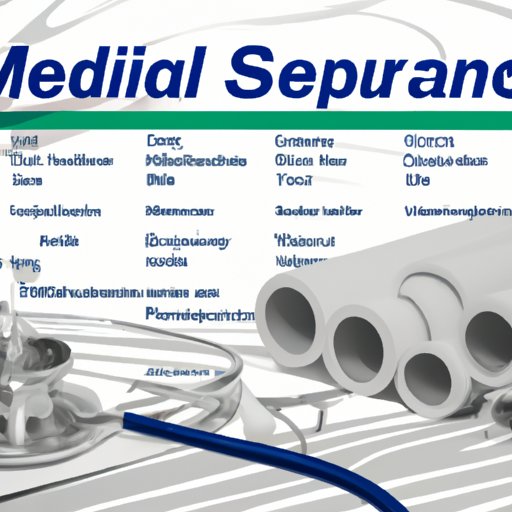Introduction
Medicare is a health insurance program provided by the federal government for individuals who are 65 years of age or older, as well as those with certain disabilities. It provides coverage for preventive care, hospitalization, and other medical services. The goal of Medicare is to provide quality healthcare to those who need it most. In this article, we will explore the benefits of Medicare, the different parts of Medicare, and how to enroll in the program.
Overview of the Benefits of Medicare
For those who meet the eligibility requirements, Medicare can provide numerous benefits. According to a study conducted by the Kaiser Family Foundation, “Medicare helps millions of seniors and people with disabilities pay for necessary health care they would otherwise be unable to afford.”
The primary benefit of Medicare is that it helps to cover the cost of medically necessary services, such as doctor visits, hospital stays, lab tests, and prescriptions. Additionally, it covers some preventive services, such as flu shots, mammograms, and colonoscopies. Medicare also covers some home health care and hospice care, as well as durable medical equipment, such as wheelchairs and oxygen tanks.

Explanation of the Different Parts of Medicare
Medicare is divided into four parts: Part A, Part B, Part C, and Part D. Part A covers hospital costs, such as inpatient care, skilled nursing facility care, and hospice care. Part B covers doctor visits and other outpatient care. Part C is an optional plan that combines the benefits of Parts A and B, as well as additional benefits, like vision and dental. Part D covers prescription drugs.
Eligibility Requirements
In order to be eligible for Medicare, you must meet certain criteria. The first requirement is that you must be at least 65 years of age. You may also be eligible if you are under 65 and have a disability or end-stage renal disease (ESRD). Additionally, certain individuals may be eligible if they or their spouse have worked for 10 years or more in Medicare-covered employment.

How to Enroll in Medicare
If you meet the eligibility requirements, the next step is to enroll in Medicare. To do so, you must gather all the necessary documents, such as your Social Security card, driver’s license, and birth certificate. Then, you must fill out an application, which can be found on the Social Security Administration website.
Once you have completed the application, you must submit it to the Social Security Administration. This can be done either online or by mail. After the application has been processed, you will receive a Medicare card in the mail, which you can use to access the benefits of Medicare.

Making Changes to Existing Coverage
Once you have enrolled in Medicare, there are certain changes that you can make to your coverage. For example, you can switch from Original Medicare to a Medicare Advantage Plan, or vice versa. Additionally, you can change your coverage levels or add supplemental coverage. You can also cancel your coverage altogether.
If you wish to make any changes to your existing coverage, you must contact your current provider or the Social Security Administration. Depending on the type of change you are making, you may need to fill out additional forms or provide additional documentation.
Finding Additional Resources for Assistance
If you need help enrolling in Medicare or making changes to your coverage, there are a number of resources available to you. On the local level, you can contact your local Area Agency on Aging or your state’s Department of Health and Human Services. They can provide assistance with understanding the eligibility requirements and completing the application process.
There are also a number of online resources available to help with the Medicare enrollment process. The Medicare website is a great place to start, as it provides detailed information about the program and its various parts. Additionally, the Medicare Rights Center offers a wealth of information about Medicare, as well as free counseling services.
Finally, there are a number of government assistance programs available to help with the cost of Medicare. These include Medicaid, Medicare Savings Programs, and Extra Help. If you qualify, these programs can help reduce the cost of your premiums or other medical expenses.
Conclusion
Enrolling in Medicare can seem like a daunting task, but with the right resources and guidance, it doesn’t have to be. By understanding the eligibility requirements, gathering the necessary documents, and filling out the application, you can easily enroll in Medicare and take advantage of the many benefits it offers. If you need help with the enrollment process, there are a number of local and online resources available to assist you.
Understanding the benefits of Medicare and how to enroll in the program is key to taking advantage of the coverage it provides. With the right resources, you can easily enroll in Medicare and begin receiving the quality healthcare you deserve.
(Note: Is this article not meeting your expectations? Do you have knowledge or insights to share? Unlock new opportunities and expand your reach by joining our authors team. Click Registration to join us and share your expertise with our readers.)
